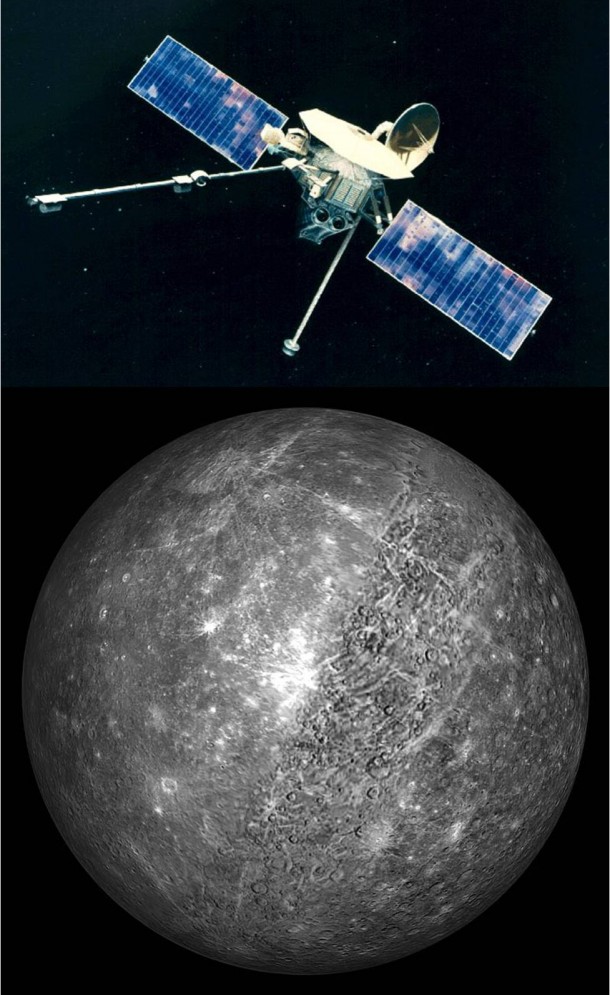
Forty-years ago this week, NASA’s Mariner 10 interplanetary probe conducted the first-ever flyby of the planet Mercury. Among other discoveries, Mariner 10 found that Mercury’s surface is heavily cratered much like the Moon.
Mercury is the smallest planet in the Solar System, having a diameter of slightly over 3,000 miles. Mercury is also the closest planet to the Sun, traveling in an elliptical orbit with an aphelion and perihelion of 43.3 and 28.6 million miles, respectively.
Its close proximity to the Sun explains why Mercury’s sunward surface temperature rise as high as 840 F. On the other hand, temperatures on the dark side of the planet can be as low as -275 F. This is the greatest known temperature differential for any planet in the Solar System.
Mercury is a fast mover by planetary standards. With an orbital velocity of about 112,000 mph, the tiny orb completes one orbit of the Sun in just 88 Earth-days.
NASA’s Mariner 10 interplanetary probe was the first spacecraft to conduct a flyby of the planet Mercury. This historic event occurred on Friday, 29 March 1974. The point of closest approach, only 437 miles above the Mercurian surface, took place at 20:47 UTC.
Mariner 10 found Mercury’s surface to be heavily pockmarked with impact craters. The probe also discovered that Mercury has a tenuous atmosphere composed mostly of helium, a very weak magnetic field, and a iron-rich core.
Mariner 10 went on to conduct flyby encounters with Mercury in September 1974 and March 1975. The third encounter brought the spacecraft within just 203 miles of the planet’s surface. More than 2,800 photographs of Mercury were taken by Mariner 10’s twin cameras during the historic trio of encounters.
As a footnote, Mariner 10 also conducted a flyby of the planet Venus in February 1974. The Mariner 10 mission was immensely successful and the last of the Mariner spacecraft series. Having long ago run out of attitude control system propellants and having its transmitter turned-off, Mariner 10 continues to silently orbit the Sun.

